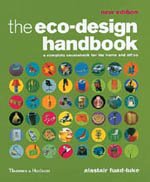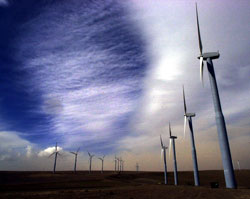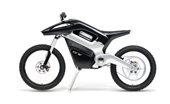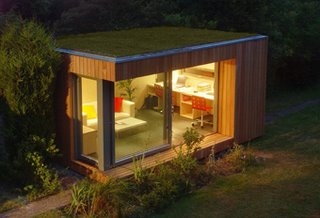Fuel Costs Drive Coin Laundry into Sun-Energy Vanguard
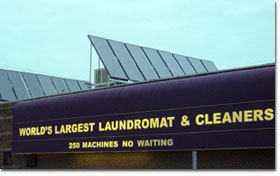 One of Tom Benson's claims to fame, proclaimed in five-foot-high letters across his storefront, is that he owns the "WORLD'S LARGEST LAUNDROMAT" -- complete with 153 washers, 148 dryers and 15 flat-screen TVs.
One of Tom Benson's claims to fame, proclaimed in five-foot-high letters across his storefront, is that he owns the "WORLD'S LARGEST LAUNDROMAT" -- complete with 153 washers, 148 dryers and 15 flat-screen TVs.But that's not the claim that excites advocates of renewable energy. It's that, perched atop the hangar-sized facility in this working class Chicago suburb, is one of the largest, most cost-effective solar systems in the country.
Scaling a ladder to the scorching roof one recent morning, the 61-year-old beamed with pride as he showed off the 36 10-by-4-foot panels that supply his 24-hour laundry with hot water.
Benson's boast about having the largest coin-operated laundry on Earth might be open to debate. At least one laundry in Denver claims to have a few more washers and dryers -- though Benson hastens to add that it seems to have less floor space than his.
What's not in doubt is that his $150,000 hot water system has become a darling of environmentalists and officials smitten with the solar promise, heralded as a prime example of how sun energy is practical, simple and cost-wise.
"The World's Largest Laundromat has served as a role model," said Illinois Lt. Gov. Pat Quinn, a vocal solar advocate. "It's shown that solar can work in the Midwest climate, in the heartland."
To the chagrin of such advocates, however, fewer than 5 percent of the 40,000 coin-operated laundries nationwide use solar, according to estimates from the Coin Laundry Association, which represents nearly 3,000 companies in the $5 billion industry.
Benson first converted from natural gas to solar in 2001, two years after buying the laundry. The motivation, he says unapologetically, was pure dollars and cents.
His heating bills were climbing as high as $13,000 -- the equivalent of 25 percent of his total monthly revenue.
"There was just no way I could survive if that continued," he said. "I was looking at a very dire situation."
At a meeting where laundry owners vented about energy prices, someone mentioned solar. Illinois was offering grants to pay 50 percent of the cost of solar systems; Benson applied, got the grant and had a system up within months.
His bank, to his surprise, didn't hesitate to loan him the needed money.
"When I showed the numbers to my bank, they understood immediately," he recalled. "It was like: Boom, 'Here's the money. Go for it.'"
His dream of a profitable, energy-efficient laundry seemed to shatter on Aug. 29, 2004, when a spark from a dryer started an inferno that destroyed the premises.
But instead of cutting his $1.6 million in fire losses and quitting, Benson vowed to rebuild. To make the laundry more customer friendly, he fashioned a play area for kids and added an indoor aviary, featuring miniature doves.
He also upgraded the solar system -- again with state aid -- in time for the laundry's reopening early this year.
Benson calculates his $150,000 system saves him $25,000 annually and so should pay for itself in about five more years. To boot, he expects it to remain operational for at least 20.
"I figure that when they plant me in the ground, one of my sons will run this place," he said. "I wouldn't be surprised if, 30 years from now, this laundromat and this solar system is still working."
The technology is so simple, requiring what Benson says is laughably low maintenance, he's perplexed why more businesses don't embrace it.
"None of my competitors within a several mile radius are doing this," he said. "It's a shame."
Since a laundry depends on hot water, its bottom line can be greatly affected by how energy efficient it is, said Michael Sokolowski of the Coin Laundry Association.
But the cost of solar systems dissuades many laundries, most of which are a fifth the size of Benson's and have annual revenues of less than $200,000, he said.
"Continuing increases in energy costs would get more to (install) it, and so would better efficiencies for solar systems -- especially systems made for smaller laundries," he said.
Benson, who has college degrees in philosophy and business administration, said he could have made his business even more environmentally friendly -- say, by adding biodegradable floor tiles. But, in scrutinizing the bottom line, he said that would have been too costly to justify.
"A lot of times the environmental stuff ... ends up costing you money," he said. "People aren't going to do it if it costs more."
His solar setup, though, has virtually no downsides, he argued.
"This happens to be one of these wonderful cases where the idea works on every level," he said.
His reliance on solar also engenders loyalty among his customers, the majority of whom are Hispanic and many of whom are poor.
Their reaction, he says, has tickled him more than anything.
"Many people here have come up to me and said, 'Thank you for helping the environment. Thank you for going solar,'" Benson said.
source: Associated Press










